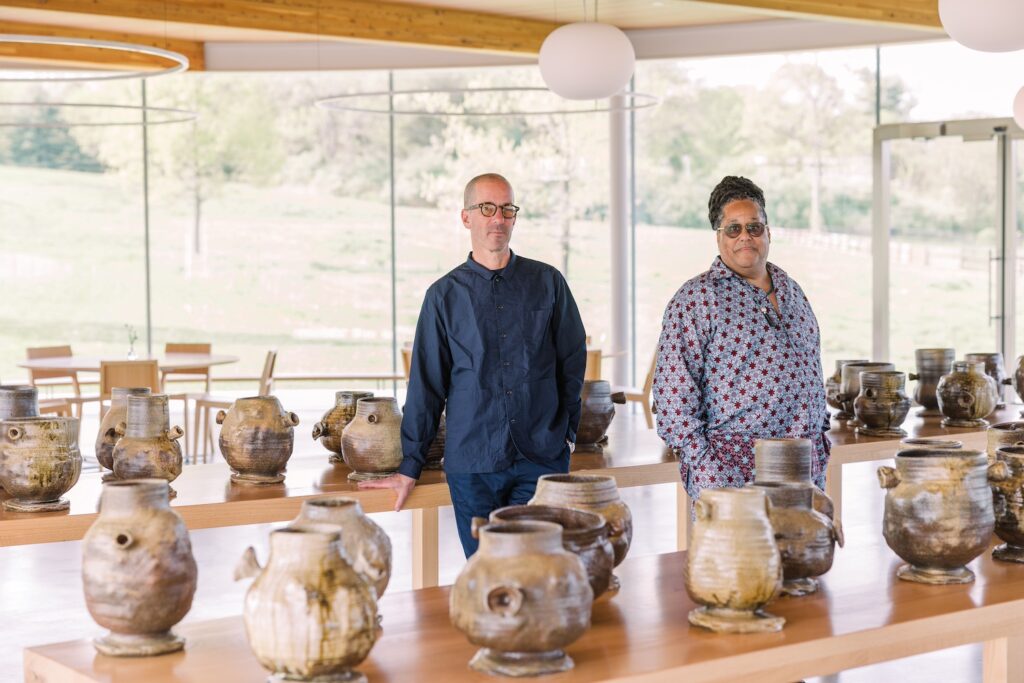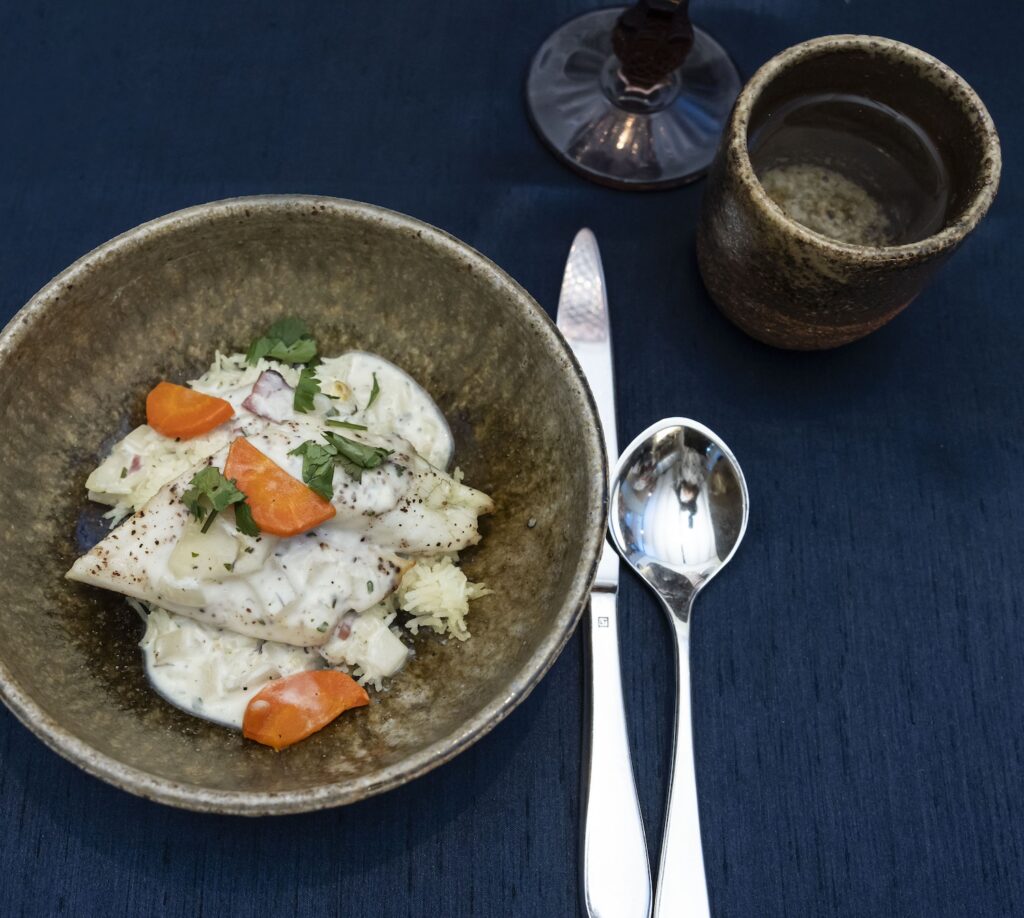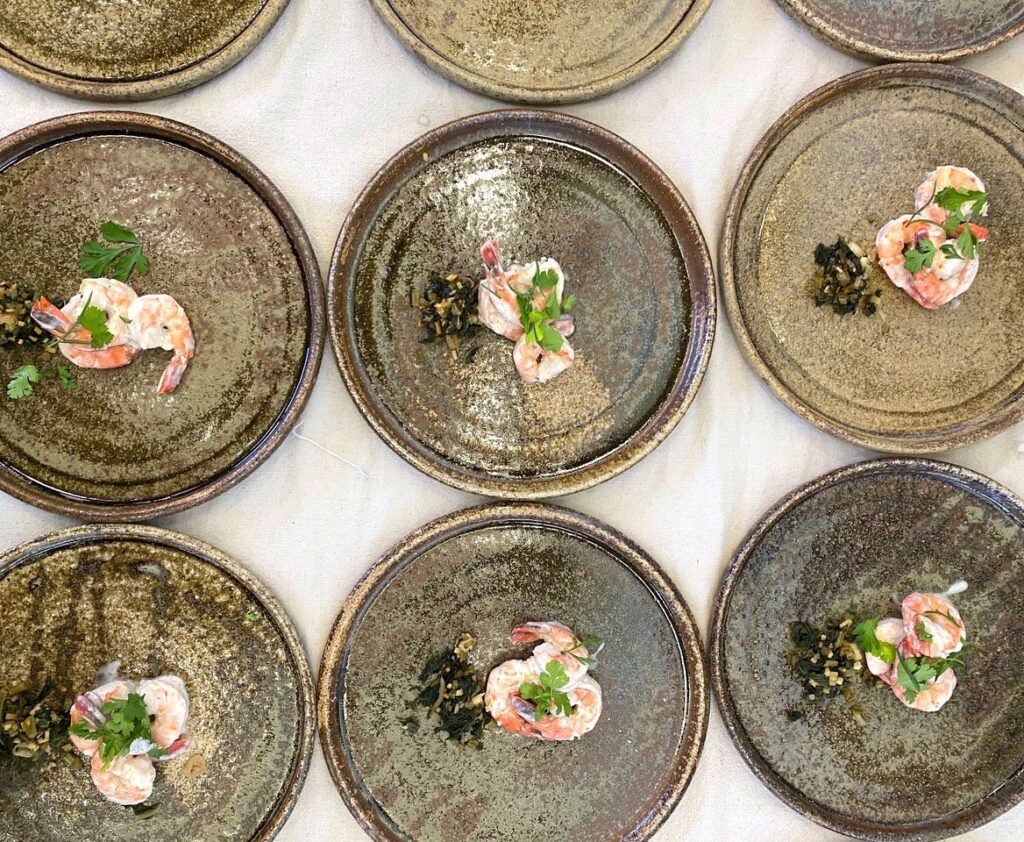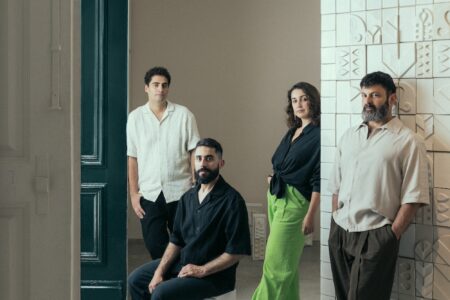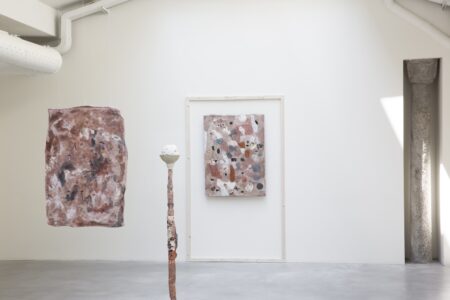Adam Silverman: Common Ground
Common Ground is an expansive, community-activated project developed by Adam Silverman that includes 224 unique ceramic pieces using clay, water and wood ash from all 50 states, Washington D.C. and the five U.S. territories.
In 2019, Los Angeles-based ceramic artist Adam Silverman was feeling the weight of a divisive mood and fractured sense of connection that was permeating the United States. The artist’s work has often been about place – a building, collection or a specific site – but Silverman wanted to expand on that idea, taking the United States as one place and making a community-centred installation around that. This became the seeds for Common Ground, a 5-year project that has travelled around the country and is now installed at the Skirball Cultural Center in Los Angeles. “The project started as a way of thinking about the country as a single place, made up of these 56 different locations, collecting materials, celebrating each place and then seeing what I could do,” Silverman explains.
He began collecting water, wood ash and clay from each state and territory, with the idea of doing some kind of ceramic installation with it. First, he took some materials from Fort Worth, Texas, where he was having an exhibition, then in Rhode Island, where he works in the summer, and then California, where he lives. It was around this time when the pandemic hit, and collecting these materials became a main focus. He asked friends, friends of friends, family and colleagues, but, then, as he says, “I started to lose steam,” so he took to Instagram to broaden the scope. Using a large wall painted in blackboard paint in his studio, he listed all the states and territories he was missing, along with a project description and what locations he needed. The positive response was immediate and surprising, with people from all ages, backgrounds and politics coming together to help make it happen. This call out became, as Silverman notes, “a microcosm of the entire project”. People commented on how the project was so important; that it reminded them that people have common interests; that people really want the same thing. Some places, such as Guam and Northern Mariana Islands, proved the most challenging to gather materials. In Guam, he called an art professor at the university, whom he had found researching online. The professor, an Indigenous woman who uses local materials in her own work, was thrilled to collaborate and she now teaches the project in her class; in the Northern Mariana Islands, a former military officer was grateful to Silverman for including this tiny nation as it is often forgotten as being an American territory.
Once Silverman received all of the materials from each location he combined them “to make a single, fully integrated, new material, erasing the borders of statehood and reimagining the country as a single, unified place.” This became the glaze. Next, he began thinking about what form the ceramic works should take. “If the idea is to bring people together to celebrate the country as a single place, how do we do that? A meal was the best way to go about it, and a cup, bowl and plate became the most sensible to make. They can be for a casual donut and coffee, a soup or a full meal.” Silverman, having enough material, then went on to make 56 ceremonial vessels, each one with its own shape. “The 224 objects are similar to one another in form, size, and composition, yet each is intentionally unique—just like each human being.”
Once the ceramics were made, next came the community activation part. It started as a “garage-band style project,” he notes, piecing bits together through museums and local cultural institutions or universities, finding chefs or cooks to make the event happen. He then teamed up with professor and foodways scholar, Dr. Scott Barton, who oversaw many of the meals. Silverman and/or Barton were involved in most, but not all of the meals. “In some cases, we were not allowed in. For example, the tableware was used for a meeting of immigrant women in leadership positions. I love that the project has had all of these people touching it,” Silverman notes.
During this time, Silverman was looking for ways to keep Common Ground together, seeing the whole of it much stronger than in pieces. In 2023, he connected with the Skirball Cultural Center in Los Angeles, who embraced the project entirely and acquired all 224 pieces. The installation is currently on view at the cultural center through January 4, 2026. All of the dishes and vessels are on display in a stunning cabinet designed by architect Kulapat Yantrasast and commissioned by Skirball. Inspired by cabinets of curiosities and traditional American-style kitchen hutches, the massive cabinet perfectly highlights each piece in the collection. Next to this is a row of glass specimen-jars filled with individual samples of water, wood ash and clay from each location, presenting the diversity of materials used throughout the process. During 2024, Silverman served as an artist-in-residence at the Skirball, and Dr. Scott Barton has been the 2024 food curator-in-residence. They have held around six meals during the year.
In many ways, the current political world is as divisive and tense as when Silverman started Common Ground in 2019, yet it is an important reminder that art remains critical as a way to unite people and show how we are more the same than different. Silverman adds that: “Common Ground showed me a very kind and generous side of America, but the most recent election was fuelled by the opposite sentiment, one of separation and fear of ‘the other’. If this project taught me anything it’s that the diversity of America is its superpower and strength, and we should be embracing and celebrating it, not trying to fear and criticise it.”
Common Ground is currently on view at the Skirball Cultural Center in Los Angeles through January 4, 2026.









